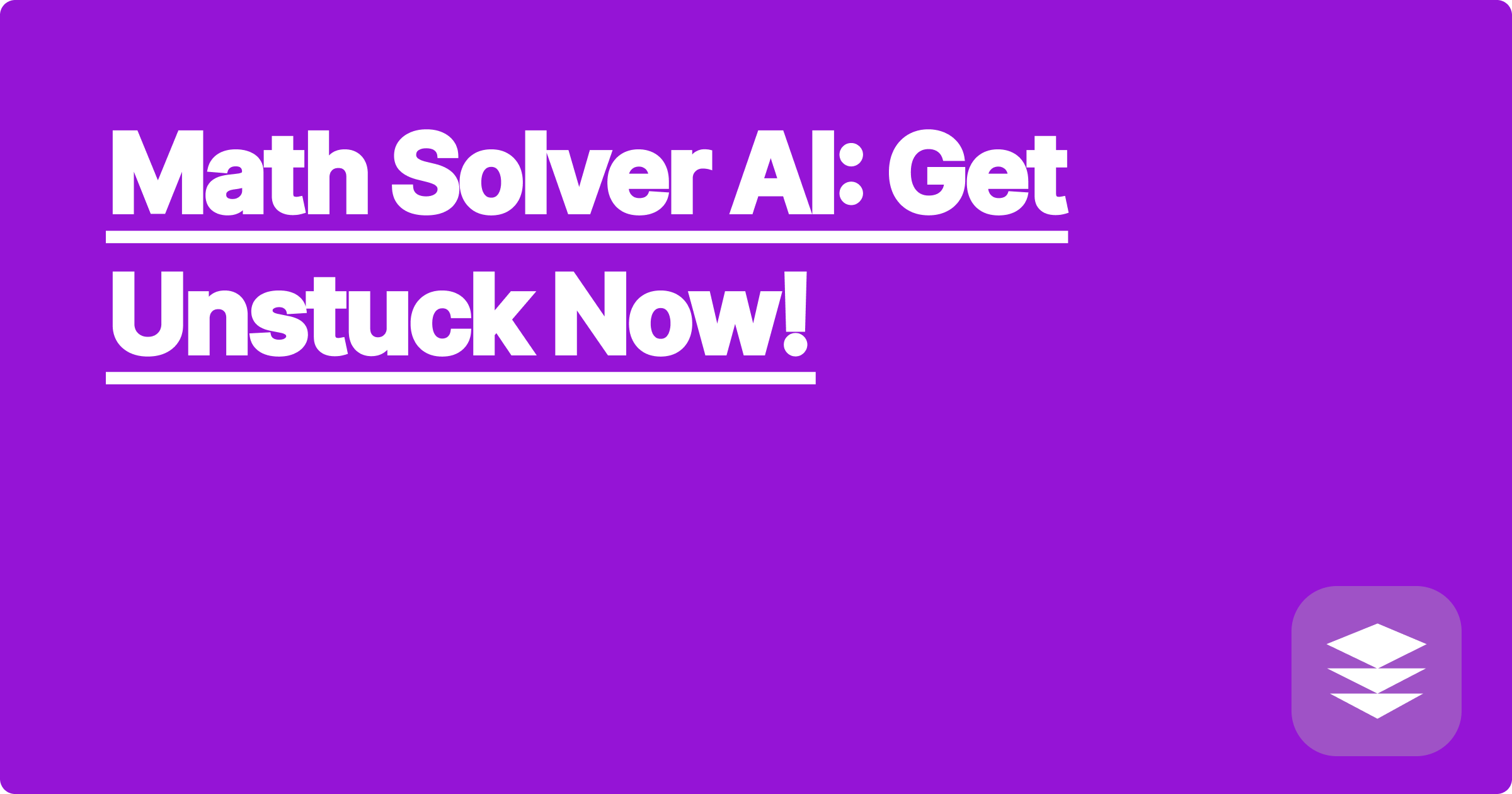
STEM fields often present complex mathematical challenges that can hinder progress for students and researchers alike. Grappling with intricate equations, abstract concepts, and lengthy derivations can be time-consuming and frustrating. Fortunately, the rise of artificial intelligence offers powerful new tools to help overcome these obstacles. AI-powered math solvers are emerging as invaluable resources, providing step-by-step solutions, insightful explanations, and alternative approaches to tackle even the most daunting mathematical problems.
For STEM students, these tools can be a game-changer, offering personalized support that complements traditional learning methods. They can help students understand underlying concepts, verify their work, and explore different problem-solving strategies. Researchers can leverage AI math solvers to accelerate their work, automating tedious calculations, exploring complex systems, and generating new hypotheses. This ultimately frees up valuable time and mental energy to focus on the bigger picture of their research.
Many STEM disciplines rely heavily on mathematical modeling and analysis. Physics, engineering, computer science, and even fields like biology and economics employ mathematical tools to describe and understand complex phenomena. These mathematical models can involve differential equations, linear algebra, statistical analysis, and other advanced techniques. Students often struggle to apply these concepts in practical settings, particularly when faced with unfamiliar problem types or complex datasets. Researchers, on the other hand, might encounter computational bottlenecks when dealing with large-scale simulations or complex optimization problems. The sheer volume of calculations can be overwhelming, hindering progress and delaying discoveries.
AI-powered tools like ChatGPT, Claude, and Wolfram Alpha offer a novel approach to tackling these mathematical challenges. These tools leverage advanced algorithms and vast datasets to provide step-by-step solutions, insightful explanations, and alternative problem-solving strategies. ChatGPT and Claude, for example, can be used to generate natural language explanations for mathematical concepts, helping students understand the "why" behind the equations. Wolfram Alpha, on the other hand, excels at symbolic computation and can handle complex calculations, including integrals, derivatives, and matrix operations. By combining these tools, STEM students and researchers can create a powerful personalized learning and research environment.
Using these AI tools is generally straightforward. First, clearly define the problem you want to solve. This might involve writing out an equation, describing a physical scenario, or providing a set of data points. Next, choose the appropriate AI tool for the task. For conceptual understanding and explanations, ChatGPT or Claude are excellent choices. For complex calculations and symbolic manipulations, Wolfram Alpha is often the better option. Input the problem into the chosen tool, ensuring that the formatting is correct and any necessary parameters are specified. The AI will then process the input and generate a solution, often accompanied by step-by-step explanations or alternative approaches. Carefully review the output, comparing it to your own understanding and intuition. If necessary, refine the input or try a different approach.
Consider the problem of finding the derivative of the function f(x) = x^3 + 2x^2 - 5x + 1. Using Wolfram Alpha, simply input "derivative of x^3 + 2x^2 - 5x + 1". The output will show the derivative as 3x^2 + 4x - 5, along with a graphical representation of the function and its derivative. Another example is solving a system of linear equations. Input the equations into Wolfram Alpha, ensuring they are properly formatted. The output will provide the solution set for the variables. For a more conceptual example, you could ask ChatGPT to explain the concept of eigenvectors and eigenvalues. The AI will generate a natural language explanation, potentially including illustrative examples and analogies. In physics, you could use these tools to solve problems involving projectile motion, calculate the trajectory of a satellite, or analyze the behavior of an electrical circuit.
To effectively integrate AI tools into your STEM studies or research, consider the following strategies. First, develop a strong foundation in the underlying mathematical concepts. AI tools should be seen as supplements, not replacements, for traditional learning. Second, practice formulating problems clearly and concisely. The more precise your input, the more accurate and helpful the AI's output will be. Third, critically evaluate the AI's responses. Don't blindly accept the output without verifying its correctness and understanding the underlying logic. Fourth, explore the different functionalities of each AI tool. Each platform has its strengths and weaknesses, so understanding their capabilities will allow you to choose the best tool for each specific task. Finally, remember that AI is a constantly evolving field. Stay up-to-date with the latest advancements and explore new tools as they emerge.
To begin leveraging the power of AI math solvers, explore the documentation and tutorials available for tools like ChatGPT, Claude, and Wolfram Alpha. Experiment with different problem types and explore the various features offered by each platform. By embracing these powerful tools, you can overcome mathematical obstacles, deepen your understanding of STEM concepts, and accelerate your research progress. Don't let challenging math problems hold you back. Embrace the power of AI and get unstuck now.
Ace STEM Exams: AI Study Planner
AI for Lab: Data Analysis Made Easy
Master STEM: AI-Powered Flashcards
Coding Help: AI Debugging Assistant
AI in Engineering: Simulation Power
Exam Prep: AI Practice Questions
Math Solver AI: Get Unstuck Now!